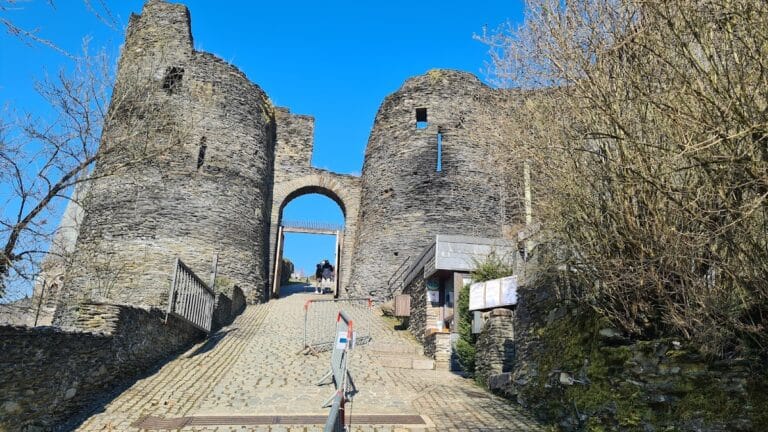Mirwart Castle: A Historic Fortress and Residence in Saint-Hubert, Belgium
Visitor Information
Google Rating: 4.2
Popularity: Low
Google Maps: View on Google Maps
Official Website: www.chateaudemirwart.be
Country: Belgium
Civilization: Medieval European
Remains: Military
History
Mirwart Castle stands on a rocky hill overlooking the Lomme River valley in Saint-Hubert, Belgium. It was originally constructed in the early 11th century by the lords of Lorraine. Their goal was to protect their territory from rival lords of Bouillon and Orchimont. This early fortress marked the beginning of a long history of military and political struggles centered on the castle.
In the late 11th century, conflicts arose between the lords of Mirwart and the monks of Saint-Hubert Abbey. The monks allied with Henry I of Verdun, the Prince-Bishop of Liège, who played a key role in the castle’s partial destruction around 1083. Later, Bishop Otbert of Liège ordered the castle’s reconstruction and granted it as a fief to the knight Bovon de Waha in 1099. Bovon’s descendants maintained control of Mirwart for nearly two centuries.
By 1293, Jean d’Avesnes purchased the castle, but the Prince-Bishop of Liège contested the sale. This dispute triggered a prolonged conflict involving several regional powers, including the counties of Hainaut, Luxembourg, Namur, Loon, and the Duchy of Brabant. Eventually, control passed to Prince-Bishop Adolph II of La Marck after Jean of Luxembourg failed to complete payments. Later, the Dukes of Burgundy took possession, and in 1471 Charles the Bold granted the castle to Eberhard van der Mark and the counts of La Mark.
During the 16th and 17th centuries, Mirwart Castle endured multiple sieges amid wars between the Netherlands and Spain, and later during the Dutch War involving the Habsburg monarchy and France. Despite suffering damage, the castle was repeatedly restored and fortified until the late 1600s. In the 18th century, it underwent a full restoration and gradually shifted from a military fortress to a stately residence, remaining under the ownership of the Liège episcopacy.
In the 19th century, the castle was acquired by Aimé-Gabriel d’Artigues, founder of the Vonêche glassworks. He expanded and remodeled Mirwart into a country palace. Subsequent owners included the Van Der Linden, Arrigade, and Von Der Becke families. Mid-century renovations were designed by architect Alphonse Balat, known for his work with King Leopold II of Belgium. The castle survived both World Wars with little damage but was abandoned and looted in the mid-20th century after provincial authorities took ownership and failed to maintain it.
After several unsuccessful restoration attempts and changes in ownership, Mirwart Castle was sold in 2016 to ICM SA. This company began extensive restoration work to convert the site into a luxury hotel, thermal baths, a concert hall, and a restaurant, aiming to revive the castle’s historical and cultural significance.
Remains
Mirwart Castle occupies a strategic position on a rocky promontory, typical of medieval hilltop fortresses. The oldest surviving sections date back to the 11th century, reflecting its original defensive purpose. Over time, the castle complex expanded with multiple buildings and fortifications adapted to changing military and residential needs.
Throughout the medieval period and up to the late 17th century, the castle underwent numerous reconstructions and enhancements to its defenses. In the 18th and 19th centuries, the structure was extensively remodeled, transforming it from a fortress into a stately country residence. The mid-19th century renovation by Alphonse Balat shaped much of the castle’s current architectural appearance.
The castle’s fabric includes a mix of medieval fortifications and later residential additions, though specific details about materials or decorative elements are not documented. Interior spaces suffered significant damage and loss of valuable furnishings and artworks due to looting during the mid-20th century abandonment.
Before recent restoration efforts, the castle’s condition was poor. The current rehabilitation project by ICM SA aims to restore the complex for modern uses, including hospitality and cultural functions, preserving its historical layers while adapting it for contemporary needs.










